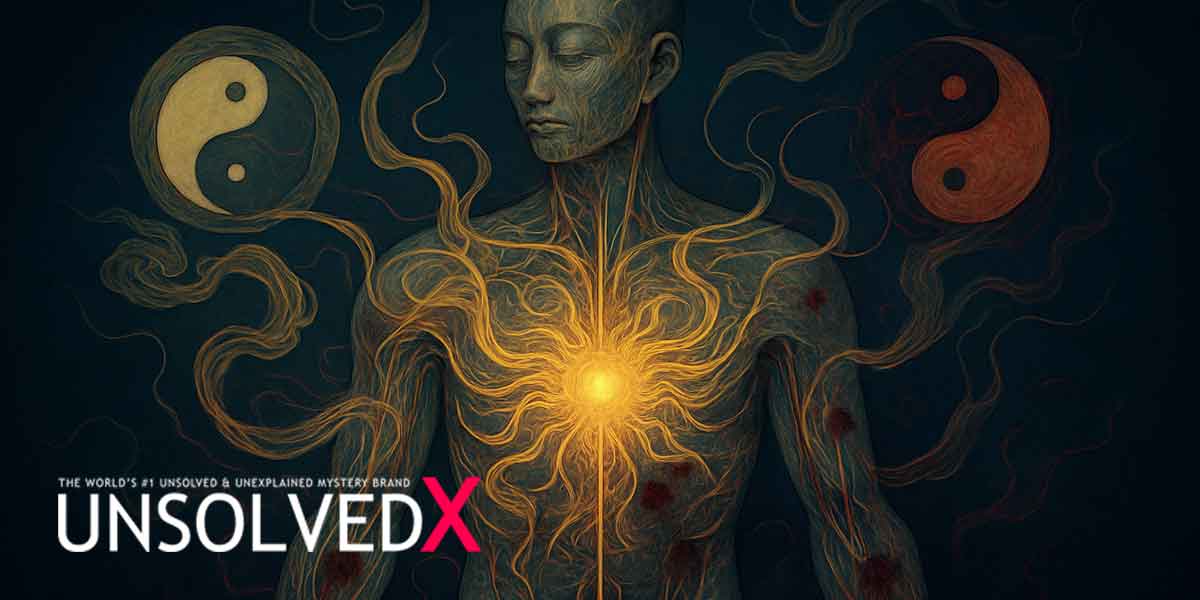Roots in Ancient Chinese Mastery
Dim Mak, often whispered as the "death touch," is a fabled martial arts technique rooted in ancient Chinese knowledge of the body’s energy pathways. Translating to "press artery" or "point striking," it targets specific acupuncture points to disrupt the flow of chi—life energy—potentially causing delayed injury or death. Legend attributes its creation to Zhang Sanfeng, a 13th-century Taoist monk credited with founding Tai Chi, who allegedly encoded lethal striking methods into early forms, as noted in historical texts from the Wudang Mountains. These techniques, passed down through secretive lineages, influenced Chinese martial arts like Shaolin Kung Fu and Okinawan Karate, where katas may conceal Dim Mak secrets. The art’s mystique lies in its precision: striking points like the carotid sinus or solar plexus with exact force to trigger neurological or circulatory collapse. Sifu Steven Burton, a modern master and the first non-Chinese inheritor of Five Thunder Dim Mak, has studied for over 40 years in China, training under luminaries like Grandmaster Li ZhiYi in Zhangjiajie.
The secrecy of Dim Mak was deliberate, reserved for trusted disciples to prevent misuse. Its principles draw from Traditional Chinese Medicine, mapping 108 vital points along the body’s 12 meridians. These points, when struck, can disrupt blood flow, nerve signals, or chi, with effects ranging from knockouts to organ failure. Historical accounts, like those in Black Belt Magazine, suggest Dim Mak was used by elite warriors, though its true extent remains shrouded, much like the lost techniques of ancient Shaolin monks. Skeptics, including martial arts writer Ian Holland, argue its lethality is exaggerated, citing the chaos of real fights where pinpoint accuracy is nearly impossible. Yet, practitioners like Burton counter that mastery requires decades of anatomical study, not mere mysticism. For those intrigued, the Wudang Taoist Traditional Kung Fu Academy offers courses on related arts, providing context for Dim Mak’s origins without compromising its guarded teachings.
Modern Guardians of a Lethal Legacy
Since Grandmaster Li’s passing in 2022, Burton teaches a system that integrates Shaolin’s limb destruction and Hung Gar’s power strikes, as detailed on his site. His instructional DVDs, including Ghost Hands Dim Mak, break down points like the “Alarm and Associated Points of Gui Zhang,” previously undisclosed to outsiders. Burton’s approach is practical, backed by medical expert Tobin Joseph, who explains the physiological impact of strikes, such as vagus nerve disruption. Teaching law enforcement and military personnel globally, Burton bridges ancient techniques with modern combat, emphasizing real-world applications over cinematic hype.
Anthony Pillage, another prominent figure who unfortunately pass away in 2018, has advanced Dim Mak through his work with the Dragon Society International. A master of pressure point fighting, Pillage focused on practical self-defense, teaching how to target points like the triple warmer meridian to incapacitate attackers. His seminars, detailed on dragonsociety.com, emphasized accessibility, allowing martial artists to bolt Dim Mak onto existing styles like Ju Jitsu or Krav Maga. Unlike Burton’s focus on Chinese lineage, Pillage adapted Dim Mak for Western practitioners, demystifying its chi-based roots while retaining its potency. Both men face skepticism, as seen in a 2016 Medium article by Holland, which calls Dim Mak “bullshido” for its unproven claims of delayed death. Yet, their students, from police to civilians, report measurable results, like faster knockouts, suggesting a kernel of truth. The Dragon Society’s online training portal offers a starting point for those curious about the methods.
Military Secrecy and Unanswered Questions
Dim Mak’s use in military contexts is a shadowy chapter, veiled by its inherent secrecy. Historical records hint at its role in training elite Chinese warriors, particularly during the Qing Dynasty, when martial arts masters served as imperial guards. Today, Burton’s work with law enforcement and close-protection operatives suggests Dim Mak points are taught for non-lethal control, targeting nerves like the brachial plexus to subdue without permanent harm. A 2023 Black Belt Magazine article notes that military applications remain classified, with techniques like “sealing the breath” or “sealing the blood” reserved for special forces due to their lethality. The art’s danger lies in its potential for delayed effects—strikes to points like the stomach-9 point near the carotid artery can cause blood pressure spikes hours later. This mirrors urban legends of assassins killing with a touch, leaving no trace, much like the unsolved mystery of the 1948 Tamam Shud case, where an unidentified man’s death defied explanation.
The secrecy surrounding advanced Dim Mak techniques fuels its enigma. The lack of verifiable evidence for Dim Mak’s deadliest claims, coupled with its acupuncture-based explanations, invites debate, yet its persistence in martial arts lore suggests hidden truths. For enthusiasts, the Shaolin Temple’s official site offers historical context on related combat arts. UnsolvedX have research the art, from a live seminar in Birmingham, UK, with Anthony Pillage in 2013, to DVD training from Burton, and we have concluded beyond reasonable doubt that striking Dim Mak points have incredible affects on the body, from excessive and enhanced pain, to knock out.










Comments
Comments section coming soon!